In early November, publishing company IDW released its long-awaited Michael Golden Micronauts Artist Edition. These are large-format, original art reproductions of important comic books and have previously honored legends of the field such as Walter Simonson, Jack Kirby, and on.
While these lavish editions come with a hefty price tag, they also become highly sought-after collectibles. This Michael Golden edition is considered to be an extremely hot – and extremely limited – addition to the collection.
It’s also a book that few ever thought would happen.

Complicated Heritage
Some of the reasons for the belief that this book might never exist include Marvel’s famously contentious owner’s rights problems, not only with creators and their intellectual property but with artists regaining ownership of their art after printing. Contracts were strictly on a work-for-hire basis, and creators assumed no control over what they did for the company once they turned their efforts in.
As one might imagine, this engendered hostilities between writers, artists, and the publishing monoliths they once worked with and received little to no respect from. Reputable comics news outlets previously stated that Michael Golden was hesitant about involvement with such a project, and without access to his personal archives, it couldn’t proceed.
Further complications include the ownership of the Micronauts themselves.
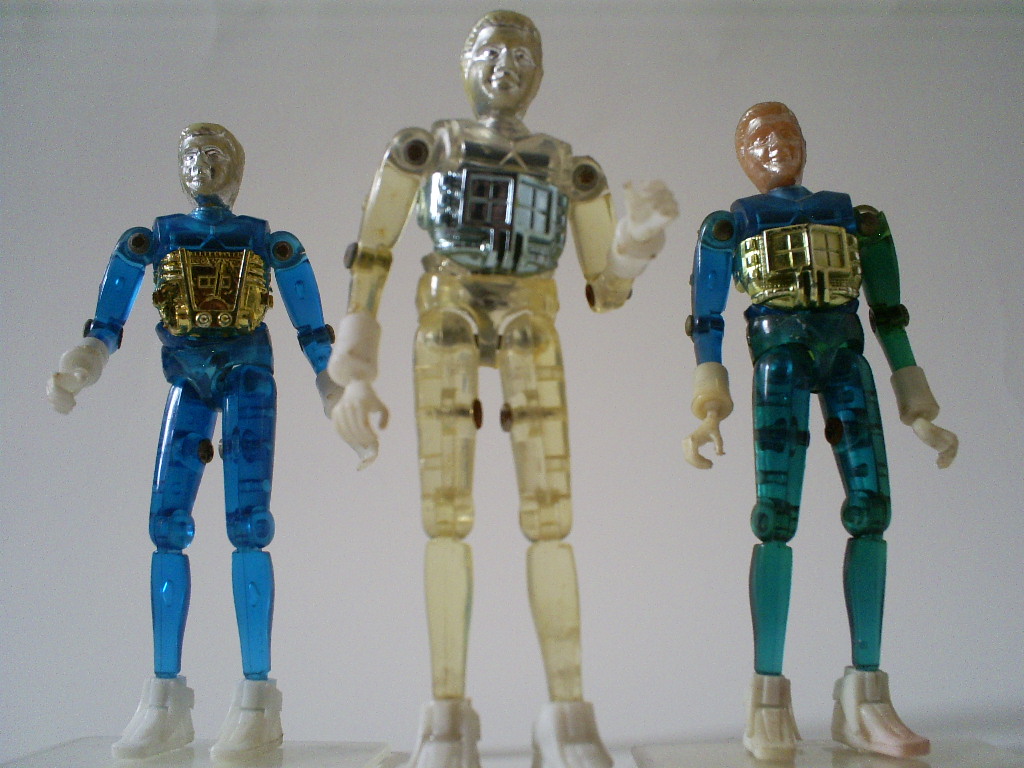
Based on two Japanese toy lines from the 1970s, and subsequently merged for the American toy market by manufacturer Mego, the action figures had several things going for them. First was the construction that offered multiple points of articulation. The second was the overall design of the figures featuring both neon-colored translucence and bright chromed surfaces. The most important aspect, and most likely Mego’s primary aim, was the action figures’ size which was equal to the era’s apex predator of the toy aisle, Kenner’s Star Wars line. This meant you could swap figures across toy lines and, more often than not, each would fit in each other’s vehicles and playsets.
That was then. The property is now owned by Hasbro whose intent was, and presumably still is, to create a toy/film universe that folds Micronauts, G.I. Joe, Rom the Spaceknight, and Transformers into one singular unit to rival former partner Marvel’s Cinematic Universe.
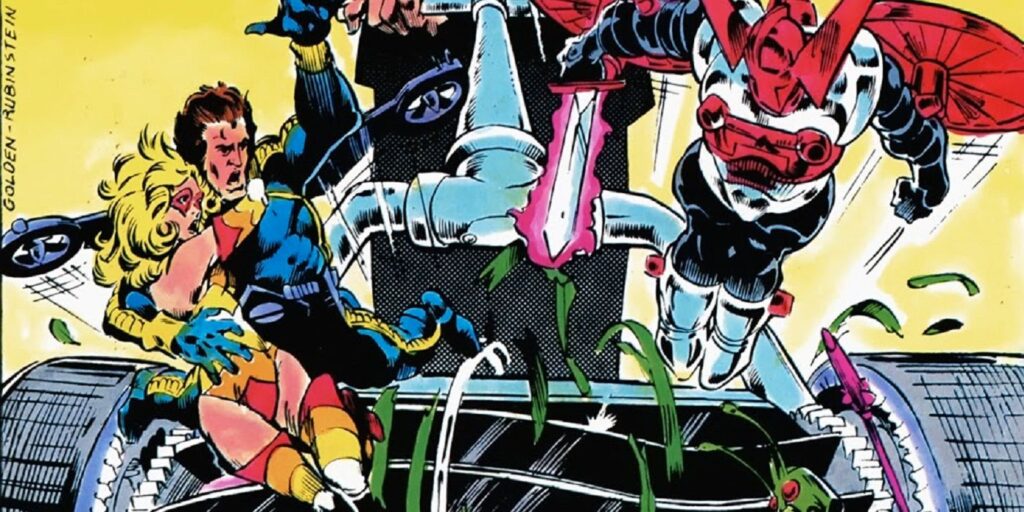
The Marvel Connections
In the late ’70 and early ‘80s, Marvel was intimately attached to all these properties but approached them in very different ways. Transformers and G.I. Joe* both had character backstories created by Marvel writers, but that material was made for and owned by Hasbro, with Marvel essentially licensing back that work for the comics. Such was not the case for Micronauts being a Mego property and ROM, a Parker Brothers item. Marvel had the rights to the toy designs but came up with characterizations after the fact, so Marvel owns those characterizations, but not the majority of the characters themselves.
(*A quick shout-out to writer Larry Hama who was the dominant force behind the version of G.I. Joe we know and love.)
The Micronauts property has bounced around from publisher to publisher in the intervening years, and some of the characters have remained consistent only because the names were previously attached to the toys: Time Traveler, Acroyear, and the Darth Vader-esque villain Baron Karza. Because of this, they are the same in name and design only. Characters Marvel invented such as Princess Marionette, Bug, and Commander Rann are “Marvel characters” and, strangely enough, were briefly folded into the Guardians of the Galaxy lore.
With Much Respect…
This is as good a time as any to mention the tragedy of Marvel writer Bill Mantlo who is credited as the creator of Rocket Raccoon and was also the primary architect of that initial Micronauts saga. He was a major figure in the Bullpen for years, with many scripting credits to his name. In the mid-1980s, he enrolled in law school while maintaining writing duties.

After passing the bar exam, he began working as a Legal Aid Society public defender. On July 17, 1992, Mantlo was struck by a car – a hit-and-run – while rollerblading, suffering severe head trauma. Mantlo biographer David Yurkovich is quoted, stating, “the brain damage he suffered in the accident is irreparable. His activities of daily living are severely curtailed and he resides in a healthcare facility where he receives full-time care.” He remains in this condition today at the age of 68, under the dutiful guardianship of his brother Michael, who sadly mused that for such a fertile mind as Bill Mantlo had, this was the worst possible fate he could have experienced.
With all this, it is no wonder people presumed IDW’s Artist Edition might never come to fruition, and yet, here we are.
Who Are The Micronauts?
At this point, having digested a lot of inside talk, one has to wonder “Who are the Micronauts,” and perhaps more importantly, “Who are THESE Micronauts?”
Imagine the universe in its totality, and nested within it is a speck, the Milky Way galaxy. Within that, resides another speck called the planet Earth. Then, down past the atomic and subatomic levels, there’s another universe with Homeworld at its center.

Commander Arcturus Rann and his robotic companion Biotron fly their ship home, the HMS Endeavor, after a long odyssey, expecting to land on the planet as heroes, receiving a commensurate welcome. Instead, they are shot at. The microverse has been overtaken by the evil Baron Karza. The royal family has been decimated save for the captured Prince Argon and his sister, Princess Mari, who has gone into hiding amid the rabble of commoners. No matter. She will be found eventually, as these lowest-tier beings are little more than a collection of limbs and organs to be harvested to keep the Baron and his coterie alive indefinitely.
Imprisoned, Rann makes the acquaintance of the roguish Bug and Acroyear, the former ruler of the planet Spartak and leader of their warrior race. Outside the window of the prison, Rann spots a young woman…or at least he thinks it is a woman. Or it could be an elaborate marionette controlled by a Microtron robot. A breakout ensues and the prisoners engage the “puppet,” who is in actuality the Princess Mari gone undercover. They make way to safety aboard the Endeavor, but it is fleeting. This entire universe is now corrupted and the armies of Karza are on their tail.
There is only one way out, but it is risky. They’re going to pierce the boundaries of their universe, and this makes them bigger…but only so much. They are now among us, the pursued and their pursuers alike, but they are at a disadvantage. The Micronauts are too small for this new realm of “Earth” and they will need a comrade in the form of a young boy, Steve Coffin, to protect them from the monsters of this reality: lawnmowers, small dogs, insects, and information. Information being, now that the breach has occurred, Karza knows there are more worlds to capture and more souls to enslave.
World-Building and Marketing
The comic series The Micronauts achieves two important goals. First, Marvel has provided the mechanical requirements Mego would have expected: personify the pre-existing toys and vehicles while offering a wealth of additional designs to build from and sell to children; create a milieu where a child interacts with these toy-sized beings, offering a proxy for the consumer base; and keep it all from being cheesy. This series, much like so many animated television series from the ‘80s, was intended as elaborate marketing.
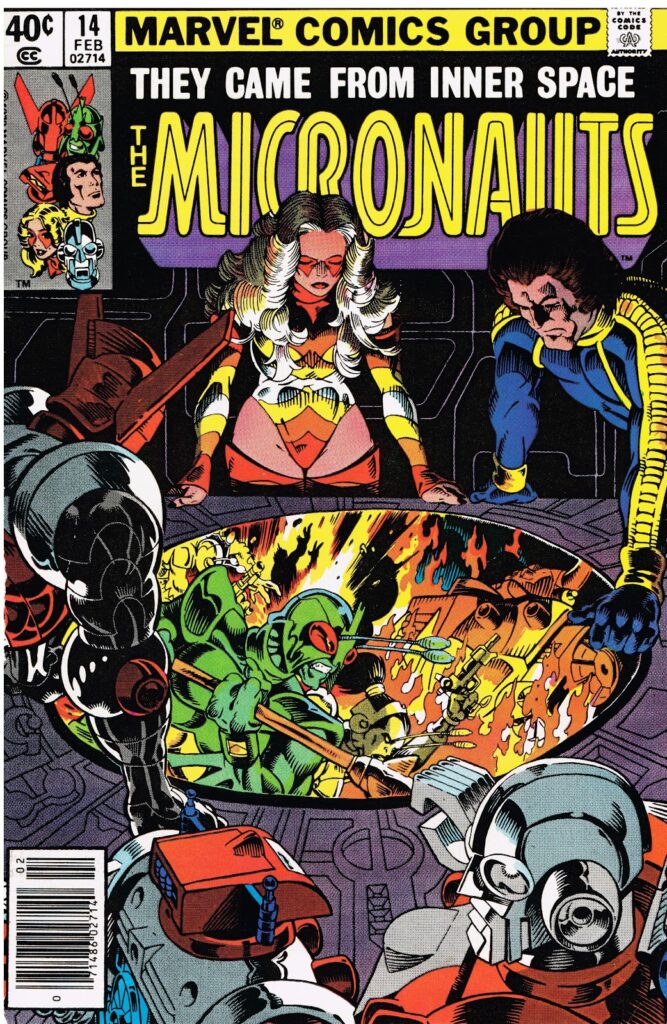
The second accomplishment was what the creative team of Bill Mantlo, Michael Golden, and inker Josef Rubenstein delivered in-between hitting all those marks: an elaborate space opera full of fantastical, sometimes grotesque touches. There are clear aspects of pastiche at work. Both Lucasfilm and Marvel succeeded with a similar formula with the Star Wars license, so parallels between the two properties were inevitable. Even so, a reader did not need to know anything about Micronauts toys to appreciate the first story arc of the comics series. It is, in many ways, a graphic novel with a finite storyline, even though it expanded past that closed-circuit years afterward.
In other words, Micronauts could have been little more than a comics version of He-Man and the Masters of the Universe. “Show off the designs, do no significant narrative damage, sell that gear, and print that money-money.” Instead, the series creators invented a story with real stakes where the fictional dangers actually felt dangerous, in return cementing for themselves a small but important legacy in the comics medium.
Michael Golden
Michael Golden left DC Comics after a brief run on the second incarnation of Jack Kirby’s Mister Miracle. His stock was on the rise, mainly because no other artist drew like him. His figures were incredibly fluid and detailed. His backgrounds were ornate. His style was once described as the muscularity of Neal Adams, the energy of Jack Kirby, and the malleability of Japanese manga, long before the American audience recognized it.
While his drafting style has changed and mutated over the years, Golden is known throughout his career for capturing that cinematic, animated quality in static comic form and getting it on the page. He focuses mainly on cover art now, so it is a treat to look at his celebrated, seminal work in narrative form through IDW’s Artist Edition format.
Recreating Incomplete Comics
Putting together a volume like this is no small task. These books are designed for readability just like any comic, except in a “process document” form. The publisher needs to get all the original art together into one unit to reproduce. That means cajoling the artist, the original publisher, and any number of private comic art collectors to give up the goods for the cause.
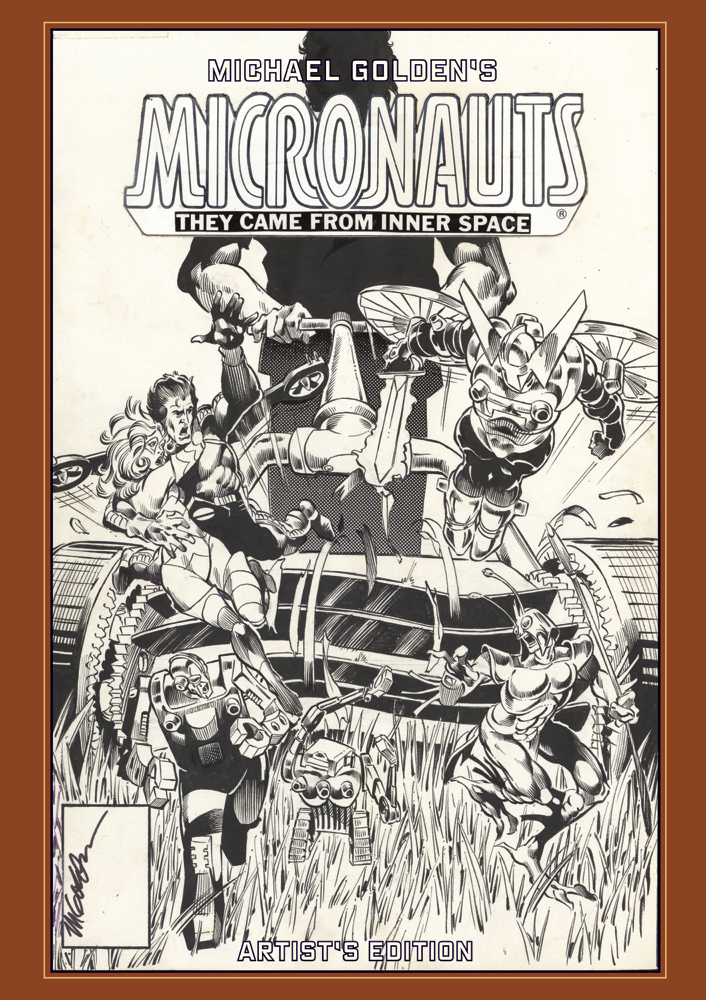
That’s on the off-chance the original artboards still exist. In their earlier histories, both Marvel and DC, as well as every other publisher, treated comics as thoroughly disposable. In an interview, famed horror comics artist Bernie Wrightson noted that DC used to give away boards to school children who went to the publishing office in New York on field trips. Mostly, these drawings got tossed in the dumpster. Thus, a final tally of artboards to complete a single issue’s worth of material winds up looking like a colander – an awful lot of holes.
To IDW’s credit, it has aggregated an impressive amount of the work, and photostats of completed pages fill in the holes, but there’s only so much one can do with an incomplete body of work. The publisher was unable to run the first issue of the series in the front of the book due to such gaps. Attainable pages from Micronauts issue #1 appear in the gallery addendum found at the back of the effort.
The Verdict on the Artist Edition
People who plan on buying the Michael Golden Micronauts Artist Edition need to remember a few things. Although it features several complete comic book issues, this volume is not a graphic novel. It is a process document. It is meant to show the meticulous work that Golden and inkers Josef Rubenstein, Bob McLeod, and Al Milgrom have put into the art of this series.
That said, if this is something that intrigues you, IDW has done a remarkable job putting it all together and the art, often described as “legendary,” lives up to the hype. It’s a pricey purchase, but it is one of those prestige buys you won’t immediately feel remorse over. This is highly recommended to fans of comic art.
Stars of Page and Screen?
Dean DeBlois, who directed Lilo and Stitch and How to Train Your Dragon: The Hidden World, will make his live-action feature debut with Micronauts, writing and direct the movie.
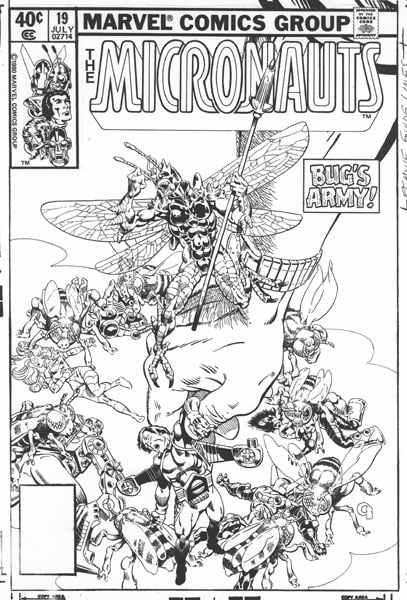
According to the site Collider, “Micronauts has been in various stages of development for a while now. Back in 2009, J.J. Abrams was set to produce an adaptation and then in 2015 Zombieland writers Paul Wernick and Rhett Reese took a crack at the script. Paramount and Hasbro also considered making their own interconnected toy universe with Micronauts sharing the same world as G.I. Joe, M.A.S.K., ROM, and Visionaries. All of that appears to be out the window with the new take being described as ‘centering on a group of intergalactic explorers.'”
Micronauts was slated to open on June 4, 2021. However, because of the knock-on effects of the global coronavirus pandemic, production schedules have been pushed back. Further, with movie theaters around the world shuttered, studios aren’t ready to sink big money into tentpole features that can’t make back costs in a theatrical run. Time will tell if the audience will have a chance once more to meet the Micronauts.
One final note: A portion of the proceeds from the sale of Michael Golden’s Micronauts Artist Edition will be donated to the fund to support the ongoing care of Bill Mantlo.
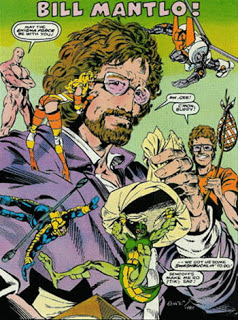
Unfortunately, Michael Mantlo passed away earlier this year…
https://comicbook.com/irl/news/michael-mantlo-brother-rocket-raccoon-creator-dead/